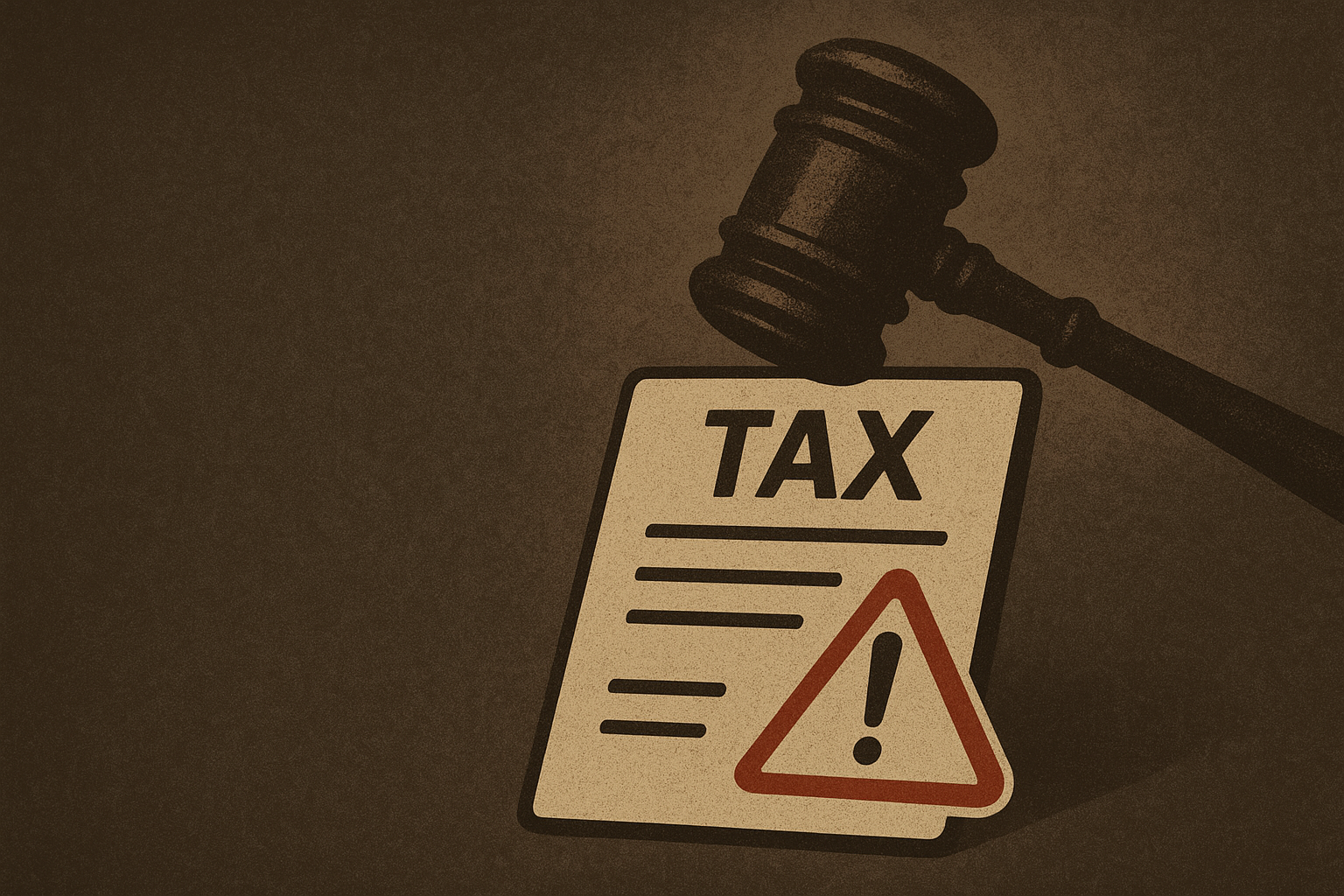|
Powered by AltAlpha AI
|
Introduction
The very intent of the legislature to introduce the GST framework was to substitute the complex tax regime with a unified system in order to enhance compliance efficiency and to further economic development. Input Tax Credit (“ITC”) is one such mechanism under the current framework designed to achieve the above-mentioned objective. Smooth and impeccable flow of ITC is essential to avoid double taxation. However, denial of ITC to the buyer on account of non-payment of tax by the supplier has become a subject of heated debate.
The Indian judicial system has, from time to time, weighed in on the issues, especially in cases involving the justifiability of withholding credit due to non-compliance by the seller. The recent judgement of the Kerala High Court in the case of M/S. Mall of Joy Pvt. Ltd. v. Union of India (4th June 2024) deals with the same aspect. The major question which arose in the case was whether the department is right in blocking the ITC or imposing liability on the buyer on account of default by the supplier.
This blog seeks to analyse the given case and to review the relevant judicial precedents in order to provide a comprehensive understanding of the legal framework surrounding the ITC claim.
Scrutiny of viability of issue surrounding ITC framework
The question seeks to raise the source behind the whole debate: the controversy challenging the constitutional legitimacy of Section 16(2)(c) of the CGST Act, which is argued to impose an unreasonable burden on the buyers to verify the supplier’s tax payments, in order to become eligible to claim Input Tax Credit.
The bare reading of the given provision is as follows:
“Notwithstanding anything contained herein, no registered person shall be entitled to claim credit of input tax in respect of supply of goods or services unless,
…….
(c) subject to provisions of Section 41 or 43A, tax charged in respect of such supply has actually been paid to the government, either in cash or through utilization of credit of input tax available.”
The provision not only violates Articles 14 and 19(1)(g) of the Indian Constitution, but is discriminatory as it places non-compliant suppliers and bona fide buyers on an equal footing, further exacerbating its perceived unfairness. Furthermore, as the debate continues, timely intervention by the Indian Judiciary has ensured that the system functions in a fair and an efficient manner.
Courts have often supported the bona fide buyers in case of genuine hardships, for instance, the Hon’ble Madras High Court, in the case of M/S. D.Y. Beathel Enterprises v. Sales Tax Officer, emphasized that the competent authorities should penalize the defaulting suppliers rather than the buyers. Moreover, the Patna High Court in the landmark judgement of Aastha Enterprises v. State of Bihar, upheld the validity of Section 16(2)(c) and stated that, “a bona fide buyer cannot be put at jeopardy when he has duly complied with the provisions of the Act.” Apart from this, there are strings of various other cases wherein the courts have clearly established the fact that it is impractical and arbitrary to expect the buyer to keep a check on whether the tax has been duly paid by the supplier or not.
Following a similar reasoning, the Hon’ble Kerala High Court in the case of M/S. Mall of Joy v. Union of India (supra) held that “ITC is a conditional right and is relied upon the proper payment of taxes to the government.” This judicial position alludes a glaring contradiction. On one hand, the Courts have explicitly upheld that even though ITC availment is subject to certain conditions as provided under Section 16 of the CGST Act, denial of the same cannot be justified if the taxpayer has duly complied with the obligations. On the other, the tax authorities continue to have a firm stance on the issue, notably through Rule 36(4) of the CGST Rules, which links eligibility of claiming Input Tax Credit to the supplier’s due compliance in filing returns and paying taxes.
The dichotomy becomes even more stark when examined closely. While the judiciary seeks to reconcile revenue interests with taxpayers’ rights, the executive’s rigid interpretation of Rule 36(4) shifts the balance disproportionately in favour of revenue collection, thereby undermining the principles of fairness and equity. The resulting imbalance between judicial interpretation and executive implementation reflects not merely a technical contradiction, but a structural deficiency that undermines the legitimacy of the GST regime.
Is it fair to hold the buyers accountable?
The practice of penalising buyers, by withholding or blocking their ITC, due to the seller’s non-compliance raises significant doubts regarding the fairness of the tax administration. Primitively, compelling the buyers to keep track of their supplier’s tax payments places an undue burden on them which is not only impractical but also unreasonable. Absence of the requisite tool or authority, needed to verify the supplier’s compliance, leaves the buyers susceptible to endure backlash due to supplier’s default.
The menace of double taxation is also a major concern for the taxpayers. Denial of ITC by the department, forces the buyers to bear the burden of paying tax twice- first, fulfilling their obligation to pay tax to the supplier for purchase and second, the interest which is levied on the buyers as under Section 50 of the CGST Act, due to seller’s non-compliance. Such a practice is detrimental, especially to small businesses, which ply on limited cash flow, and further denial of ITC can disrupt their working and even threaten their survival. As per the Micro, Small and Medium Enterprise (MSME) Pulse Report [SIDBI -TransUnion CIBIL, 2022], nearly 70% of MSME’s in India face working capital constraints, and any denial or blockage of credit significantly affects their cash flow liquidity. For small trader or manufacturer, working on thin profit margins, such double taxation can erode viability and disrupt operations. While the stringent rules and regulations pertaining to ITC aim at curbing the cascading effect of taxes, such rules wrongfully weigh down on honest and genuine taxpayers.
The Bigger Picture: Challenges and the Way Forward
Over the past few years, the GST framework has become increasingly compliance-orientated, thereby heightening the burden of the taxpayers. The structural inequality becomes increasingly significant when equating the capabilities of large corporations with that of small businesses and entities. While businesses having ample resources can ensure seamless compliance, in contrast, the smaller entities are disproportionately charged.
In addition to this imbalance, the financial strain of non-compliance, which results in ITC reversal or imposition of penalties and interests which further aggravates the problems of the bona fide taxpayers. The operational dislocations caused by such issues, compel the businesses to allocate their resources to resolving such disputes, thereby affecting their capability to contribute to economy. This discrepancy not only weakens the taxpayer’s trust in the tax system but also hinders the growth of a country’s economy.
- Roadmap
It is very evident from the challenges being faced by the taxpayers owing to the current GST framework that reform is the need of the hour. Policies must be formulated in a way which not only shields the bona fide taxpayers and businesses from unjust hardships but also ensures compliance on their part. Simplifying the procedural requirements surrounding the ITC claim would make compliance more accessible to small businesses, which would further encourage participation of such entities in the economy. The same can be done by introducing measures such as auto population of ITC details from supplier’s filling into the recipients’ return, invoice matching mechanism or creating a centralised reconciliation platform with minimal manual intervention, thereby reducing the scope for errors.
Additionally, the introduction of real-time tools or mechanisms on the part of buyers to verify the supplier’s compliance by use of advanced technology, could lead to the creation of a solid and transparent tax framework. This would mitigate the risk and the issues associated with ITC denial, thereby strengthening the GST ecosystem. Such reforms would guarantee that the system remains approachable in the long run, eventually contributing to a just and an equitable economy.
Conclusion
The contentious debate surrounding withholding ITC and buyers’ liability highlights the imperative for a balanced tax compliance approach. While the CGST Act intends to establish an integrated and simplified tax structure, its present model disproportionately burdens honest taxpayers. By addressing systemic deficiencies and ensuring equitable treatment for compliant buyers, the government can uphold the aim of the GST regime and bolster public confidence in tax administration. Legal reforms, supported by effective enforcement mechanisms, are essential to achieve this balance.

